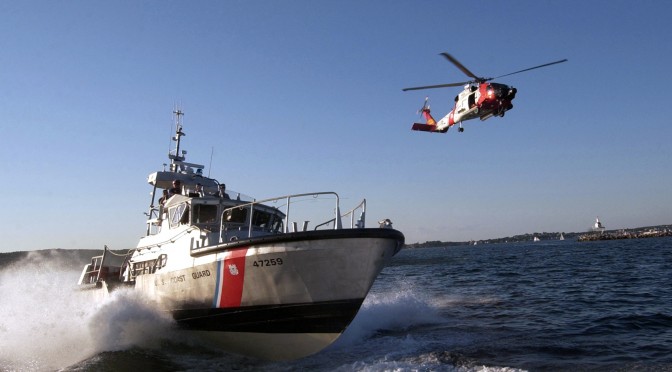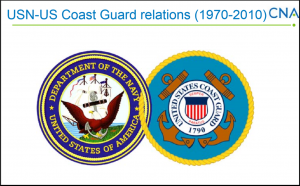By W. Alejandro Sanchez.
Between May 31 and June 24 of this year, U.S. Southern Command (SOUTHCOM) carried out joint naval exercises with its partners in the Greater Caribbean. The annual exercises, known as TRADEWINDS, brought together units from over a dozen countries. Without a doubt, multinational military exercises are useful as the personnel involved in the maneuvers learn new techniques from each other as well as how to work together. Nevertheless, a major concern is how well the lessons learned are properly applied to real-world operations.
The Exercises
TRADEWINDS 2015, the 31st iteration of these month-long exercises, took place in two phases: first in Saint Kitts and Nevis and then in Belize. U.S military personnel trained with their counterparts from 18 other nations, including Grenada, Guyana, Haiti, nations from the Greater Caribbean, Mexico, and even overseas partners like the Kingdom of the Netherlands and the United Kingdom (which both have territories in the Caribbean). Caribbean multinational agencies also present included the Regional Security System (RSS), the Regional Intelligence Fusion Center (RIFC), and the CARICOM Implementation Agency for Crime and Security (IMPACS), among others. According to SOUTHCOM, the exercises were aimed at strengthening “the capacity of Caribbean nations to respond to natural disasters, humanitarian crises and counter transnational organized crime.”
There have been several reports that enumerate and explain the nature of the exercise. For example, off the coast of Belize, the navies from Belize, Mexico and the United Kingdom carried out a simulated vessel boarding, search, and seizure operation. Mexican naval personnel from the Mexican Navy ship ARM Independencia, travelling in an interceptor boat, boarded the British vessel the HMS Severn and “simulated [the] arrests of a group of merchant mariners who tried to resist.” Other exercises included crowd control, safety techniques like clearing buildings, and gunnery with a 50-caliber
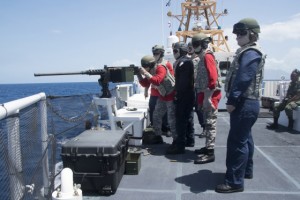
machine gun. A June 10 video posted in the Coast Guard Compass, the official blog of the U.S. Coast Guard, shows USCG personnel aboard a patrol boat from Grenada, explaining various techniques to their counterparts regarding how to understand the sea states and navigate effectively as they pursue a suspicious vessel.
In addition to praise from SOUTHCOM, the exercise has enjoyed the public endorsement and support from various Caribbean governments. For example ZIZ News, a Saint Kitts news agency, quoted Captain Kayode Sutton of the St. Kitts and Nevis Defence Force as saying, “the support from the government [in Basseterre] has been tremendous… Mr. Osbert DeSuza, the Permanent Secretary in the Office of the Prime Minister… visited the Exercise Control Centre and he received a brief as to what is going on for the entire exercise, the training, all the exercises that are going on right now.” Meanwhile, Guyana deployed its navy’s flagship, the GDFS Essequibo, to the exercise’s maritime phase, highlighting Georgetown’s commitment to display the best it has to offer to operate along its regional allies.
How to Determine Success?
During the TRADEWINDS 2015 opening ceremony in Saint Kitts, Lt. Col. Patrick E. Wallace, commander of the
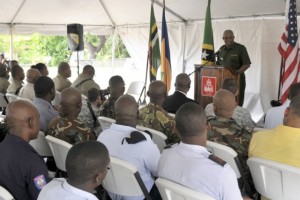
St. Kitts and Nevis Defense Force, declared, “I stress that the knowledge and skill that comes from this exercise is essential … However, just as important, is the strengthening of multi-nation
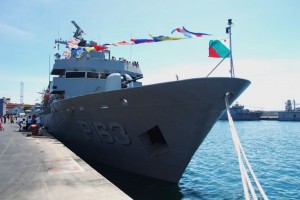
nating with each other will be similarly successful in real life-or-death situations. As one retired Colonel from the Peruvian military told me, “ultimately, the only way to know if an exercise is successful is if you test the lessons in real life.”
Making a multinational exercise successful so it can be properly applied in the real world includes coming up with realistic scenarios, as explained to this author by John Cope, a Senior Research Fellow at the Institute for National Strategic Studies at the National Defense University. He suggests that what’s needed are “players (other than the US) had a major role in shaping the exercise scenario and the organization of the event so that the exercise emphasizes what they see as their needs rather than what the US/SOUTHCOM thinks are their needs, also the non-US players assume important positions in the structure of the exercise.”
A SOUTHCOM press release announcing the beginning of the exercises went over the two operational phases of TRADEWINDS 2015. But there is also a third phase, the “Key Leader Seminar,” designed to facilitate a discussion of the other phases and the way ahead. Ideally, a comprehensive report will be drafted regarding the lessons learned, as well as lessons that still need to be fully learned, from TRADEWINDS 2015. (In the interests of full-disclosure: in preparation for this commentary, I contacted SOUTHCOM for further information on the lessons learned aspect of TRADEWINDS 2015, but received no reply.)
Numerous military agencies, both U.S. and international, have published reports discussing how to properly adapt lessons learned from both exercises and operations. As the Establishing a Lessons Learned Program Handbook by the Center for Army Lessons Learned ponders, is a military organization “willing to openly discuss its mistakes, and is it willing to share those mistakes across organizational lines to make everyone better?” If not, it will be very difficult to implement an effective [Lessons Learned] program… The act of ‘saving face’ precludes individuals from admitting their mistakes.”
Hopefully phase 3 of TRADEWINDS 2015 included an open and honest discussion between representatives from the participating militaries, where there was not only praise for the event, but admitting, even if it was off the record, which areas they still need improving, in order to work in greater cohesion with the security forces of neighboring countries. Cope explains that, at least
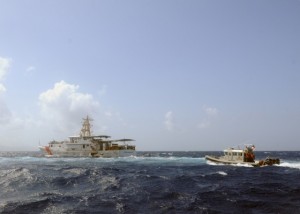
regarding the Caribbean, a base for institutionalizing operational and tactical procedures and processes that worked during an exercise may already be standard across various regional states. “Where CARICOM countries are struggling to perfect common approaches is in standardizing procedures for strategic and operational planning and strategic/political decision making. Their comprehensive disaster management process and experience with the Cricket World Cup have helped Caribbean countries, but leaders continually change.”
A PR Campaign?
Part of the problem may be simply a lack of a consistent PR campaign by regional navies (and security forces in general) to highlight the effectiveness of exercises. In other words, if a narco-speedboat is detained in the Caribbean by units of the U.S. and Jamaican coast guard services, it would be helpful if a subsequent press release could tie the hypothetical successful operation with lessons learned from TRADEWINDS. Another initiative would be to invite high-ranking government officials as well as journalists and other experts to the exercises as they take place, as this would help showcase the level of cooperation militaries from different states can achieve. This would have the added benefit of serving as a prime example to support similar exercises in the future.
At a time of budget constraints and with SOUTHCOM being the lowest-priority command center in the U.S. military, said agency needs to better demonstrate to Washington that its activities, including multinational exercises, are beneficial for both U.S. and regional security.
Concluding Thoughts
This discussion is not meant to question the validity of TRADEWINDS specifically, but rather to address multinational military exercises in general. The U.S. conducts quite a number of these in the Western Hemisphere, such as UNITAS, PANAMAX, Continuing Promise, and Beyond the Horizon/New Horizons.
Multinational exercises are important but a strong link has yet to be made between a successful naval exercise (i.e. in which units from two nations operate together to stop a suspicious vessel in the Caribbean), and whether the lessons learned from said simulation were successfully applied in the real world. Given the ongoing amounts of drug trafficking that flow through Caribbean waters, putting these lessons learned to the test would not be difficult.
Ultimately, SOUTHCOM is not lacking in exercises to increase its relations with regional allies in the Greater Caribbean and rest of Latin America; but it seems that the agency could do with a better PR campaign to explain how effective these exercises are in the long run.
W. Alejandro Sanchez is a Senior Research Fellow at the Council on Hemispheric Affairs (COHA) where he focuses on geopolitics, military and cyber security issues in the Western Hemisphere. Follow him on Twitter: @W_Alex_Sanchez.


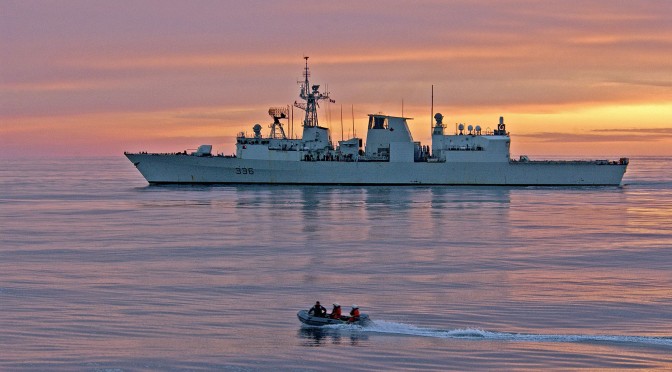
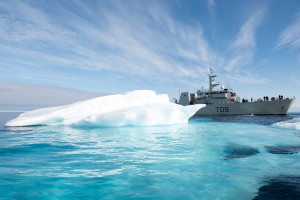
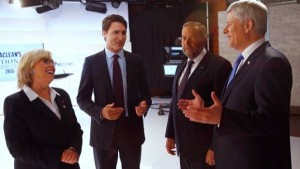 “[n]one of the three parties are going to want to actually talk about this.” The Conservatives are unusually weak on the defence procurement file, so it is only natural that they would prefer to focus on other issues. The
“[n]one of the three parties are going to want to actually talk about this.” The Conservatives are unusually weak on the defence procurement file, so it is only natural that they would prefer to focus on other issues. The 

